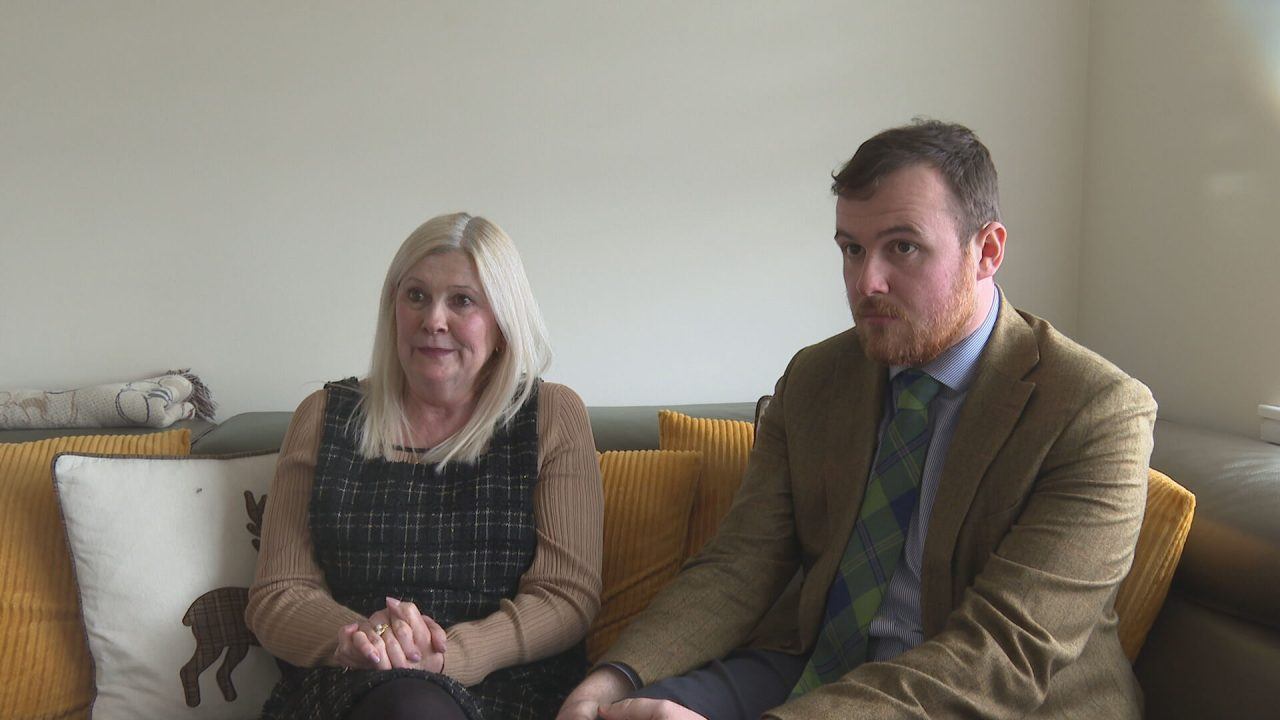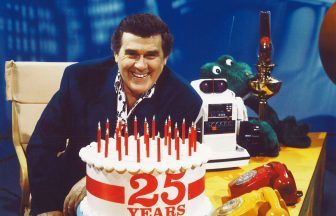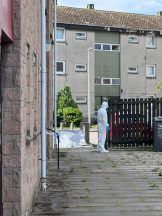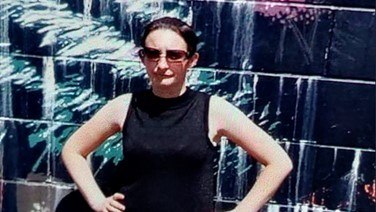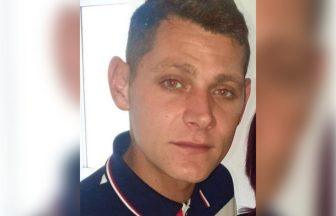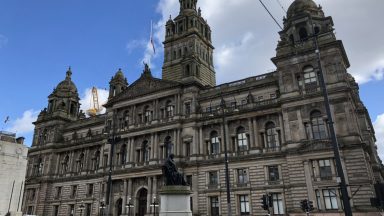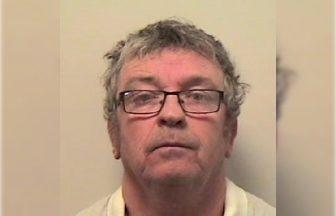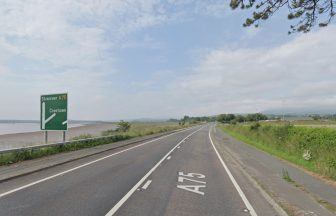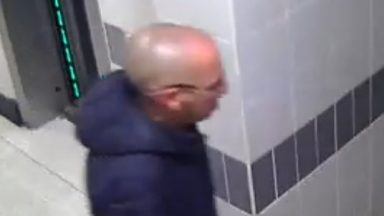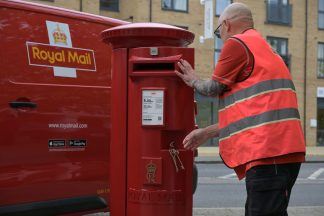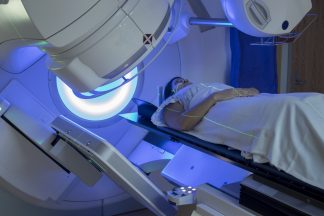A family grieving the “avoidable tragedy” of their dad’s death are fighting for “vital” signs of a stroke to be added to the national awareness campaign.
Grandad Tony Bundy, from Tullibody, Clackmannanshire, died aged 53 in June 2023 after a stroke was not detected early enough by medics at Glasgow Royal Infirmary.
His family say a series of symptoms were dismissed during routine Face Arms Speech Time (FAST) checks, after a Significant Adverse Event Report (SAER) was carried out into Tony’s death.
Selena, Tony’s wife, told how he lay in a corridor for several hours before he suffered a basilar artery ischaemic stroke, which occurs when blood flow to the brain is interrupted.
She said Tony didn’t receive a “life-saving” thrombectomy – a surgical procedure to remove a blood clot – in enough time as the operation is only available between the hours of 9am and 5pm.
“Tony should not have died – that’s definite. His life was robbed from him, Selena told STV News:
“This tragedy didn’t need to happen. So many chances were missed to help him.”
Tony’s son James added: “The FAST test denied him fast diagnosis and fast treatment.
“But even if he were diagnosed on time, he wouldn’t have had a life-saving thrombectomy because we have a part-time NHS when it comes to emergency stroke treatment.”
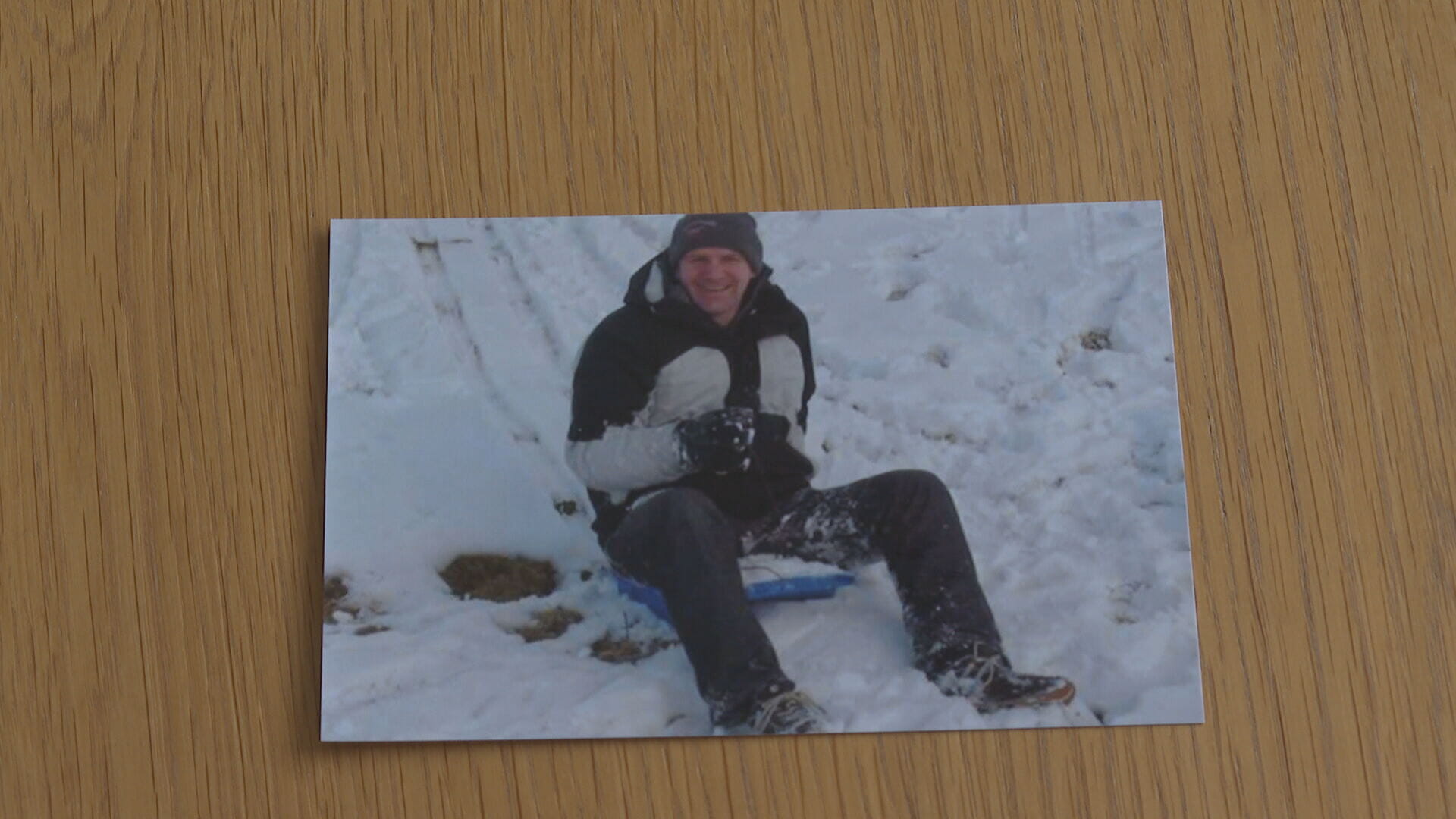 Supplied
SuppliedThrombectomy, a surgical procedure that removes a blood clot from an artery or a vein, changes the course of recovery from stroke, significantly reducing the chance of disabilities like paralysis, visual impairment and communication difficulties.
However, due to the lack of a national thrombectomy service, nearly 1,000 Scots who would have been eligible missed out on the chance of receiving the treatment last year.
Only around one in seven of those who needed the procedure in Scotland in 2023 got it, according to Chest Heart and Stroke Scotland.
‘It was if he was paralysed’
Tony’s stroke symptoms began a week before his death. He experienced dizziness and cold sweats and was also violently sick while at work.
After an appointment with his GP a week later, Tony’s symptoms had lessened and tests showed no sign of a stroke. He visited his optician, but no eyesight issues were detected.
However, while in a shop with Selena, Tony’s balance deteriorated, his speech was slurred and he began vomiting.
Despite his worsening symptoms, an ambulance was initially withheld because Tony did not show the typical FAST signs.
It wasn’t until his condition deteriorated further that an ambulance was dispatched and he was taken to the Royal Infirmary.
“They tried a video call first. I had to take the phone off Tony because he was struggling,” Selena said.
“I said, ‘He can’t answer you. He can’t get out of his chair, he can’t stop being sick.’
“It was as if he was paralysed. Even if they didn’t think it was a stroke, when you can’t walk there is something far wrong.”
Selena said Tony did not show symptoms during the FAST test in the ambulance or with a triage nurse at the hospital.
He was then left sitting in the “freezing cold” corridor for five-and-a-half hours before suffering another stroke.
“All the symptoms suddenly appeared all at once. His face was drooping, he couldn’t lift his arm,” said Selena.
“We were shouting for help and he was taken away for a scan.
“Eventually someone came to speak to us and said Tony had a major stroke. We said ‘we’ve been telling you that.'”
Tony was transferred to the stroke unit at the Queen Elizabeth University Hospital where he was put on life support.
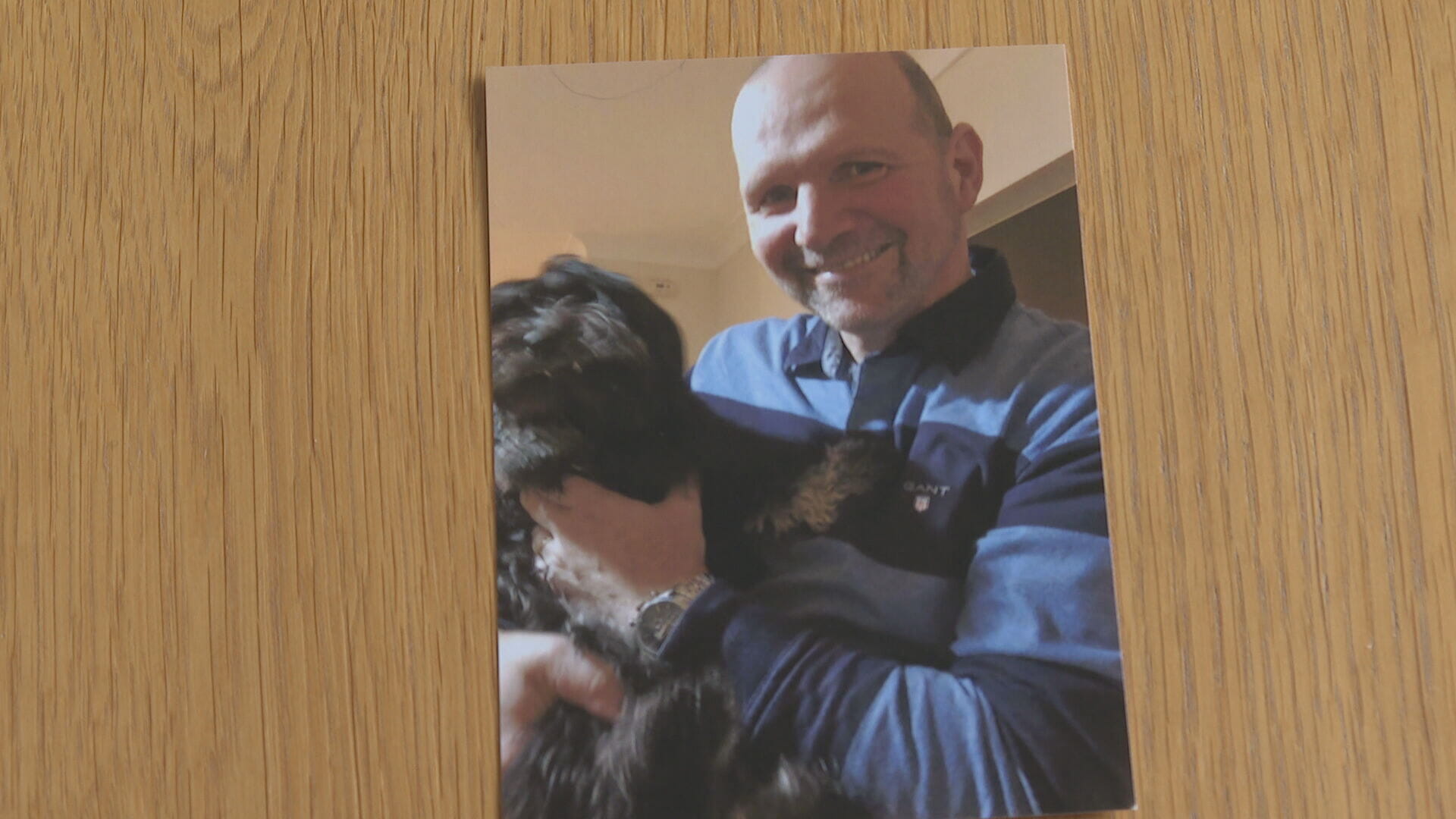 STV News
STV NewsSelena explained: “He could still hear at that point, so I was telling him ‘you will be okay.’ I didn’t think he was going to be but what can you do? I told him ‘hang in there, we all love you. You won’t be long’.
“Then you could see his eyes just went blank. Visually, one minute he was engaging with your eyes, then there was nothing.”
The consultant informed the family they would perform a thrombectomy on Tony as medics were concerned he “wouldn’t make it through the night”.
“We were all in shock. We didn’t expect this after lying in hospital for so long,” Selena said.
“The way it was put over was that because he is really poorly he would not survive, and it could help him be stable for his best chance for operation.”
But it later emerged Tony did not undergo surgery until 9.30am, as it is only carried out by staff between the hours of 9am and 5pm.
A few days later on June 29, Tony’s life support was turned off.
“He didn’t regain consciousness,” Selena said. “They got blood going back into the brain but there was that much fluid, and swelling, there was no brain activity.
“We only found out afterwards Tony didn’t get the operation he needed in time.”
James said: “For heart attacks only to have treatment between nine-to-five, Monday to Friday. That’s outrageous. It’s just unacceptable in this day and age.”
Tony’s death has prompted the family’s campaign to add “Balance” and “Eyes” to the stroke symptom detection list FAST.
Selena said: “All the charities say we dont have the funding. The government (say) ‘we don’t get enough money.’ They want trials but won’t fund a trial. It’s a Catch 22. I think they want to shunt the blame.
“In my opinion, even if you do teach all these clinicians, which I think has to be done from a root level whatever your role is, It shouldn’t be FAST. You’re going to miss a lot of strokes. It’s not good enough.”
James said the campaign to broaden stroke symptom criteria has attracted cross-party support.
He added: “The thing I would say to every politician is, surely it’s better for someone to turn up at the hospital and be told it’s good news, that they didn’t have a stroke, than for someone to stay at home and die because they didn’t think they had a stroke.
“The guidelines specifically say that FAST doesn’t detect all strokes. Yet, we’re still blindly trusting this test.
“We need to empower people, trust them, and save lives by at least trialling the BeFAST method.
“The last thing I want is for anyone to lose their parents or have their life change completely because of a stroke that doesn’t present itself in the usual way.”
Selena says she hopes the death of her husband will lead to change so other families are spared the same anguish.
“It doesn’t matter what kind of stroke you have – you should be given the chance to live, especially if you’ve presented yourself to a GP,” she said.
‘The system let Tony down’
The Stroke Association warn adding the symptoms to the list will add more pressure to the already over-stretched health service, though they agree more action is needed.
The charity’s associate director John Watson said: “Tony Bundy was left sitting on a hospital trolley in a corridor for hours without being seen, when it was actually identified he was having a stroke.
“It was a terrible tragedy what happened and the system let the family down in a number of ways.
“We don’t agree with changing the FAST campaign that goes out as public messaging – it really needs to be something that is kept really simple and focused on stroke. Trials show the message is better retained by people over time.
“I think we need to stick with FAST messaging for public, but when we get people to the hospital, we need professionals to be aware of the full suite of symptoms.
“We need speedy identification and the treatments available that could actually help people once it’s identified they are having a stroke. That doesn’t happen often enough.”
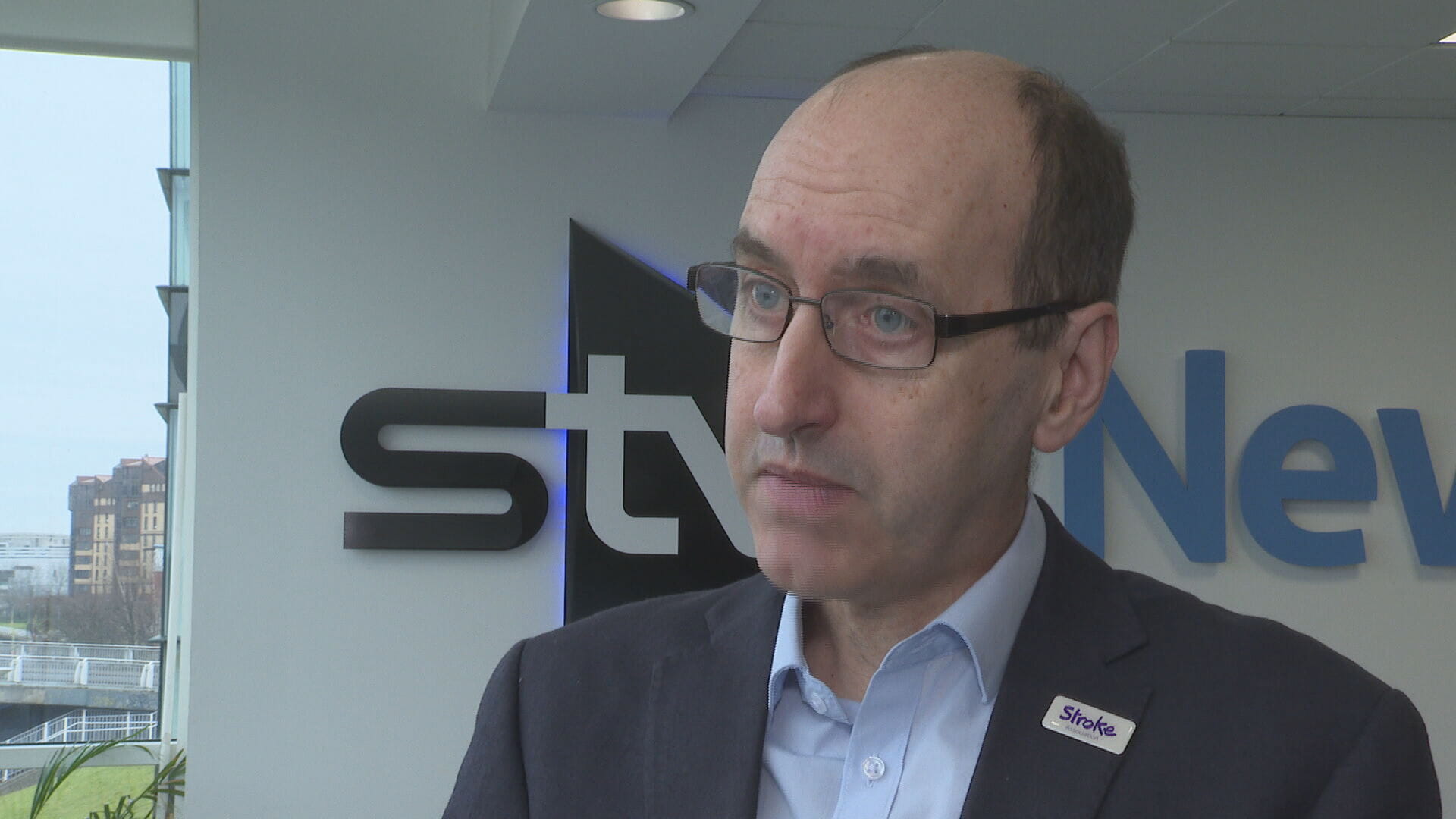 STV News
STV NewsMr Watson says FAST is a “very good mechanism” for triaging patients, detecting around 85% of strokes and picking up few false alarms.
“The problem with BeFAST message is that somebody turning up with balance issues could have all sorts of different things going on, from dehydration to an ear infection – then a large number of people are then sent off to the stroke department. That department can’t cope with that.
“Then people having strokes won’t get treatment they need if they’re waiting in a queue while someone with an ear infection is being seen.”
Mr Watson said thrombectomy must be made available 24/7 across Scotland’s health boards.
He said: “The thrombectomy that would have helped Tony was not available. He had to wait all night until the next morning, when it was less likely to be effective. It’s a problem; people are being missed.
“Thrombectomy is the best treatment we have available. It’s a fantastically effective and efficient treatment, saves lives, and reduces ongoing disability. However, it is only available in certain times and certain places.
“We must have a round-the-clock national thrombolysis service available to everyone who needs it.”
A spokesperson for Chest Heart & Stroke Scotland said: “We are fully supportive of any family which is impacted by the conditions we support to share their personal experiences of health care and call for change if they feel standards of care have not been met.
“We are pleased that the Bundy family have had the opportunity to raise their concerns through an internal process with the health board, and to have had the opportunity to discuss the issue at Scottish Parliament through the petitions process.
“Our evidence-based FAST campaign, delivered in partnership with the Scottish Ambulance Service, is focused on ensuring people are able to spot the most common signs of stroke and take action quickly. The National Clinical Guideline on Stroke identifies FAST as the approved approach for recognising a stroke early. As Scotland’s largest health charity our work will be evidence based, informed by clinical leadership and governance and the most up to date published research.”
An NHS spokesman said: “While NHS Greater Glasgow and Clyde cannot discuss individual patient cases for reasons of confidentiality, we would once again like to express our deepest sympathy to this family. We can confirm that senior members of our team have met with family members to discuss the contents of the SAER report.
“We can confirm that all recommendations in the SAER report have already been or will be implemented in the timeframes set out within the report.
“Our services follow national guidelines and we fully support Scottish Government initiatives which aim to improve stroke symptom awareness.”
Public health minister Jenni Minto said: “We extend our deep condolences to the Bundy family.
“The Scottish Government is guided by the 2023 National Clinical Guideline for Stroke, which is clear that more evidence is needed before a recommendation can be made on screening for non-FAST stroke symptoms and that more research into improving public awareness of symptoms is required. This position is supported by both Chest, Heart and Stroke Scotland and Stroke Association.
“We are working to increase access to thrombectomy procedures and ensure timely and equitable life-saving treatment for those who need it.”
Follow STV News on WhatsApp
Scan the QR code on your mobile device for all the latest news from around the country


